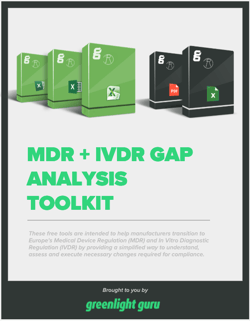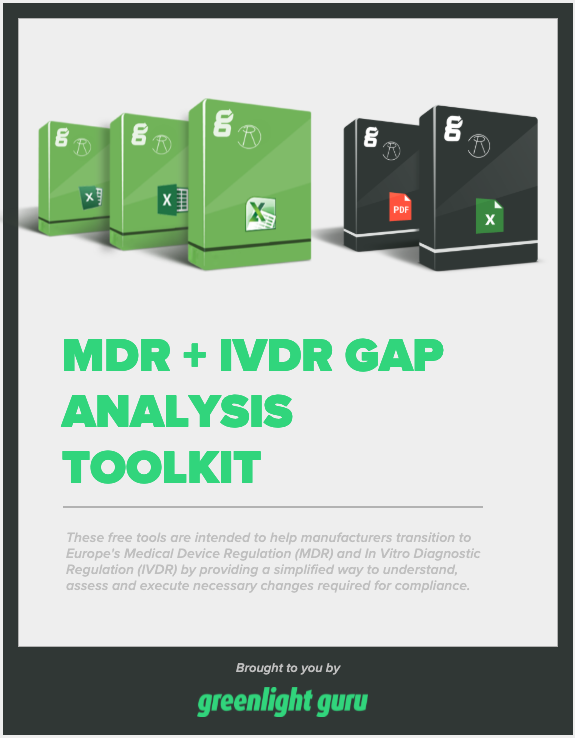Explaining IVDR Classification for In Vitro Medical Devices

What is IVDR?
The In Vitro Diagnostic Regulation (IVDR) is a European Union regulation applicable to in vitro diagnostic medical devices. It establishes a risk-based classification system for these devices, enhancing regulatory scrutiny with most devices requiring a conformity assessment by a Notified Body. IVDR is very different from its predecessor, the In Vitro Diagnostic Directive (IVDD).
And right now, regulatory agencies like the Food and Drug Administration (FDA) in the US are working to update their regulations and guidelines to stay relevant with the pace of growth. They recognize that the use of SaMD will only continue to increase as available technology becomes more sophisticated.
What is the difference between IVDD and IVDR Regulation?
Under the European Commission, IVDR entered application on May 26, 2022. The new regulation is far more comprehensive than IVDD and it will require an estimated 80-90% of IVDs on the EU market to undergo a conformity assessment by a Notified Body (NB).
One of the keys to understanding whether your in vitro diagnostic device requires review by an NB—and how that affects its path to market—is the IVDR classification system for devices. Unlike IVDD, the new risk-based system under IVDR is governed by a set of rules that all IVD manufacturers will need to use to classify their devices.
Here’s what IVD manufacturers need to know about the new IVDR classification system:
Overview of the IVDR classification system
Under the IVDR classification system, IVD devices are grouped by risk, similar to how other medical devices are grouped under the EU Medical Device Regulation (EU MDR).
However, because in vitro devices are used with biological material that has been removed from the body, they may also pose a risk to public health due to transmissible agents within the biological material. As a result, IVDR classification also takes public health risk into account.
The IVDR establishes four risk classes based on both patient and public health risk:
-
Class A - Low patient and public health risk
-
Class B - Moderate patient risk and/or low public health risk
-
Class C - High patient risk and/or moderate public health risk
-
Class D - High patient risk and high public health risk
Examples of IVD devices that fall into each of these four risk classification types include:
Class A: Examples of Class A IVDs include specimen receptacles, laboratory instruments, and buffer solutions.
Class B: Class B devices include IVDs for self-testing with less risk to the patient than those in Class C. For example, Class B devices include pregnancy tests, fertility tests, and cholesterol tests. Class B is also the default classification for IVDs that are not covered by any other rules.
Class C: Class C devices include IVDs that are intended to be used for detecting an infectious agent without a high risk of propagation, or for detecting the presence of an infectious agent with the potential to cause death or severe disability in the case of an erroneous result.
Class D: This device class includes IVDs that detect or are exposed to life-threatening transmissible agents or transmissible agents and infectious diseases with a high risk of propagation.
What are the 7 classification rules under IVDR?
IVDR outlines seven rules for classification along with guidance on implementing the rules to help IVD manufacturers identify the risk class of IVD devices.
-
Rule One states that devices are Class D if they:
-
Detect or are exposed to a transmissible agent in blood or tissue
-
Detect or are exposed to a transmissible agent that causes a life-threatening disease with a high risk of propagation
-
Determine the infectious load of a life-threatening disease in a situation where monitoring is of critical importance
-
-
Rule Two states that devices used for blood grouping or tissue typing to ensure the compatibility of blood, tissue, or organs for transfusion, transplantation, or cell administration are Class C, with some specific exceptions.
-
Rule Three lists the types of devices that are also Class C devices, including (but not limited to) those that:
-
Detect or are exposed to a sexually transmitted agent
-
Detect an infectious agent without a high risk of propagation
-
Detect an infectious agent if there is a significant risk that an error would cause death or severe disability (For a full list of Class C sub-rules, see Annex VIII)
-
-
Rule Four states that devices for self-testing are classified as Class C, with several exceptions that include pregnancy tests, fertility tests and cholesterol tests. Those devices are classified as Class B.
-
Rule Five states that products for general laboratory use, instruments, and specimen receptacles are Class A.
-
Rule Six states that devices not covered by the previous rules are Class B.
-
Rule Seven states that devices which are controls without a quantitative or qualitative assigned value are Class B.
For the full text of the rules, see Annex VIII in the IVDR.
NOTE: It should be noted that under the new rules, the majority of IVDs will be classified as Class B or Class C; however, IVDR also states that if a device has multiple intended purposes that fall under different classes, the device should be placed in the highest-risk class.
How does IVD class affect the path to obtaining CE Marking under IVDR?
Under IVDD, the vast majority of IVDs could be self-certified by their manufacturers, meaning they did not require the involvement of a Notified Body to obtain their CE Marking.
However, the requirements in IVDR mean that manufacturers now face the opposite situation—most of them will need to undergo a conformity assessment by a Notified Body. In fact, unless an IVD is a Class A, non-sterile device, it will now require the involvement of a Notified Body.
This has huge implications for IVD manufacturers. For one, it increases the number of companies that Notified Bodies must audit. In fact, the workload for Notified Bodies is one of the reasons that the European Commission (EC) recently delayed the implementation of IVDR.
Even with the delay, however, it’s crucial that IVD manufacturers understand there may be a bottleneck and should proactively work with a Notified Body during the extended transition period.
IVDR also requires every IVD manufacturer to implement a quality management system (QMS). Manufacturers of all device classes aside from Class A, non-sterile IVDs will need to have their QMS and their Technical File or Design Dossier audited by a Notified Body.
In the EU, ISO 13485 is the recognized standard for a QMS, and an audit must be performed to make sure that your QMS conforms to the standard’s requirements. If the IVD manufacturer passes the audits, they will be issued a CE Certificate and an ISO 13485 Certificate.
After receiving the certificates, the manufacturer must declare conformity, as directed by Annex IV of IVDR. The Declaration of Conformity is the manufacturer’s assent that their device is compliant with all applicable regulations within the EU. At this point, the CE Marking may be affixed to the product.
Remember, all IVD device classes other than Class A, non-sterile will be audited every year by a Notified Body to ensure their compliance with IVDR classification and other applicable requirements.
How Greenlight Guru simplifies the IVDR classification process for Faster CE Marking
The move to a risk-based classification system under IVDR means that risk analysis is more important now than ever for IVD manufacturers. At Greenlight Guru, we understand the critical role that risk plays in classifying and bringing a safe and effective product to market.
That’s why our QMS software comes with an easy-to-use graphical interface that ties into your design control matrix—and allows you to identify risk acceptability criteria with ease.
You’ll be able to use that criteria and terminology to apply consistent classification of risk across the board. Risk levels are then automatically evaluated based on your criteria and used to populate your risk acceptability matrix—providing more control and visibility into risk.
Get your free demo of Greenlight Guru to see just how easy we make risk analysis and IVDR classification for your device.
Looking for a design control solution to help you bring safer medical devices to market faster with less risk? Click here to take a quick tour of Greenlight Guru's Medical Device QMS software
Wade Schroeder is a Medical Device Guru at Greenlight Guru with a noticeable enjoyment of medical device product development processes. As an electrical engineer by trade, he began his career developing medical exam procedure chairs and later designing IVD devices. He has been a risk management enthusiast since the...
Related Posts
Cybersecurity for Medical Devices: Best Practices from Regulatory Standards
Clinical Testing for Medical Devices: What US Manufacturers Need to Know
IVDR for In Vitro Diagnostic Medical Device Companies - Ultimate Guide
Get your free resource
MDR + IDVR Gap Analysis Toolkit











